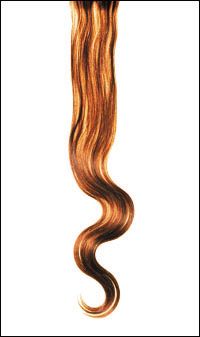Detecting New Psychoactive Substances in Hair
A simple and rapid ultrahigh-performance liquid chromatography tandem mass spectrometry (UHPLC–MS–MS) method to identify new psychoactive substances (NPS) in hair has been published.
Volume 11, Issue 2, p7

(Photo Credit: Getty Images/Biran Hagiwara)
A simple and rapid ultrahigh-performance liquid chromatography tandem mass spectrometry (UHPLC–MS–MS) method to identify new psychoactive substances (NPS) in hair was recently published in the Journal of Chromatography A.1
The growth of the NPS market in recent years has become the driving force behind the need for a rapid and sensitive identification of these drugs. Hair is an excellent matrix to investigate drug use because it allows the determination of drugs that accumulate in keratinized tissues. It also allows a more retrospective analysis of an individual’s drug habits that can correspond to several months of ingestion. Hair analysis can also be focused specifically on the parent drug, making it very valuable to the forensic toxicologist.
Two samples of 30 g of hair were washed and decontaminated and then cut into small pieces of 1 mm. Sample preparation was followed depending on which class of NPS to be extracted: 300 μL of formic acid 0.1% for cathinones, piperazines, and amphetamine type substances; and 300 μL of methanol for synthetic cannabinoids. The samples were then analyzed using UHPLC–MS–MS in electrospray ionization (ESI) mode. The limits of detection (LODs) varied from 2–20 pg/mg. The method was linear from the limit of quantification (LOQ) to 500 pg/mg and showed acceptable precision (%RSD<15) and accuracy (%E<15) for all the analytes.
The method was also applied to 50 authentic hair samples from real cases, such as workplace drug testing and driving licence renewals. The team detected synthetic cannabinoids in three of the samples, cathinones or ephedrines in four, and ketamine in two.
The team concluded that the UHPLC–MS–MS method allowed the identification of synthetic cannabinoids, cathinones, and other stimulants in hair samples with a simple preâtreatment step. The method has the potential to monitor the spread of NPS across the world. - K.M.
Reference
1. Sabina Strano-Rossi, Sara Odoardi, Marco Fisichella, Luca Anzillotti, Rossella Gottardo, and Franco Tagliaro, Journal of Chromatography A1372, 145–156 (2014).
This article is from The Column. The full issue can be found here>>

Regulatory Deadlines and Supply Chain Challenges Take Center Stage in Nitrosamine Discussion
April 10th 2025During an LCGC International peer exchange, Aloka Srinivasan, Mayank Bhanti, and Amber Burch discussed the regulatory deadlines and supply chain challenges that come with nitrosamine analysis.











